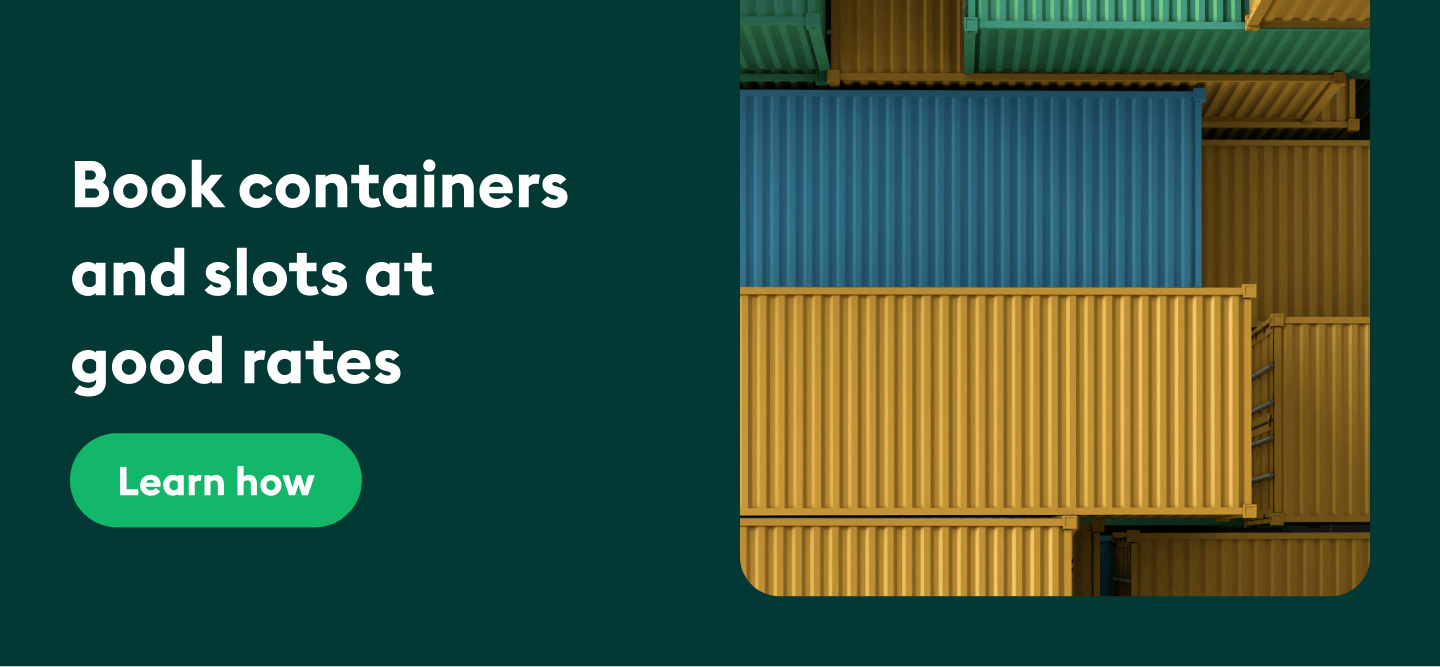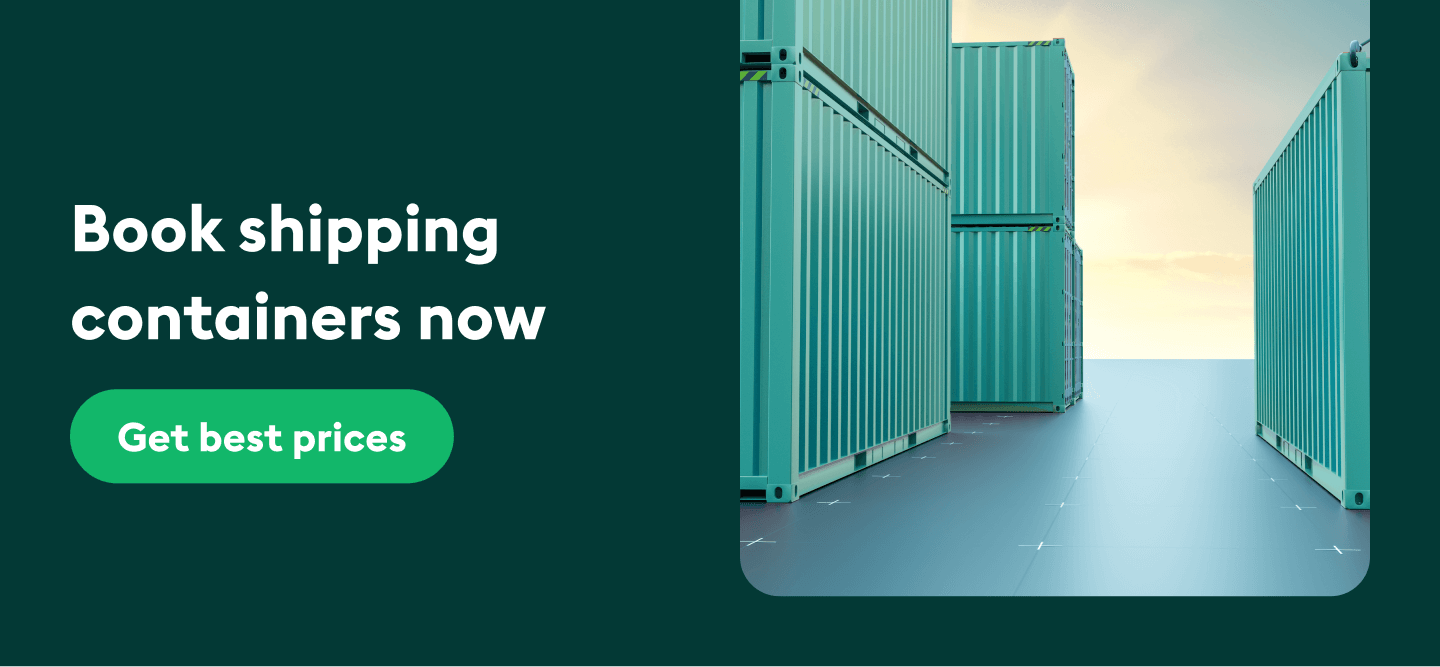Booking a shipping container can seem like a tedious and overwhelming process. But we’re here to help. Read this blog for a step-by-step guide on how to book a container in shipping. Or, learn how 1,700 companies are booking containers globally.
The shipping industry provides a convenient way for businesses to ship their cargo across the globe. But how do you manage everything related to booking containers, along with ensuring that you’re paying only the best rates?
That’s where Container xChange can help you. On our platform, you can easily book shipping containers online at the best prices in 2,500+ locations. All the container suppliers on our platform are vetted, so you can be sure that you’re dealing only with reliable companies.
All you have to do is fill in your container requirements, including the container type and your desired route. You’ll then have multiple offers from reputable suppliers to choose from.
Our platform makes it easy for you to book shipping containers online. Simply use the leasing search below to check out offers from 1,700 suppliers on your desired route now.
25 x 40HC
Container Supplier
Container Company Blurred Name
5
Pick-up charge
User pays
$120
19 Freedays
$44.20 Per diem
How to book a container in shipping in 5 steps
There are different ways to book a shipping container. Some rely on freight forwarders to handle their shipment. And many plan their entire shipment on their own, right from leasing the container to booking slots with shipping lines. It’s also important to choose the right shipping container and ideal shipping partner to make sure your cargo is shipped safely.
To help you make the right and most cost-effective decision, we’ve curated these 5 simple steps. These steps will help you understand your shipping needs and make an informed choice about booking a shipping container.
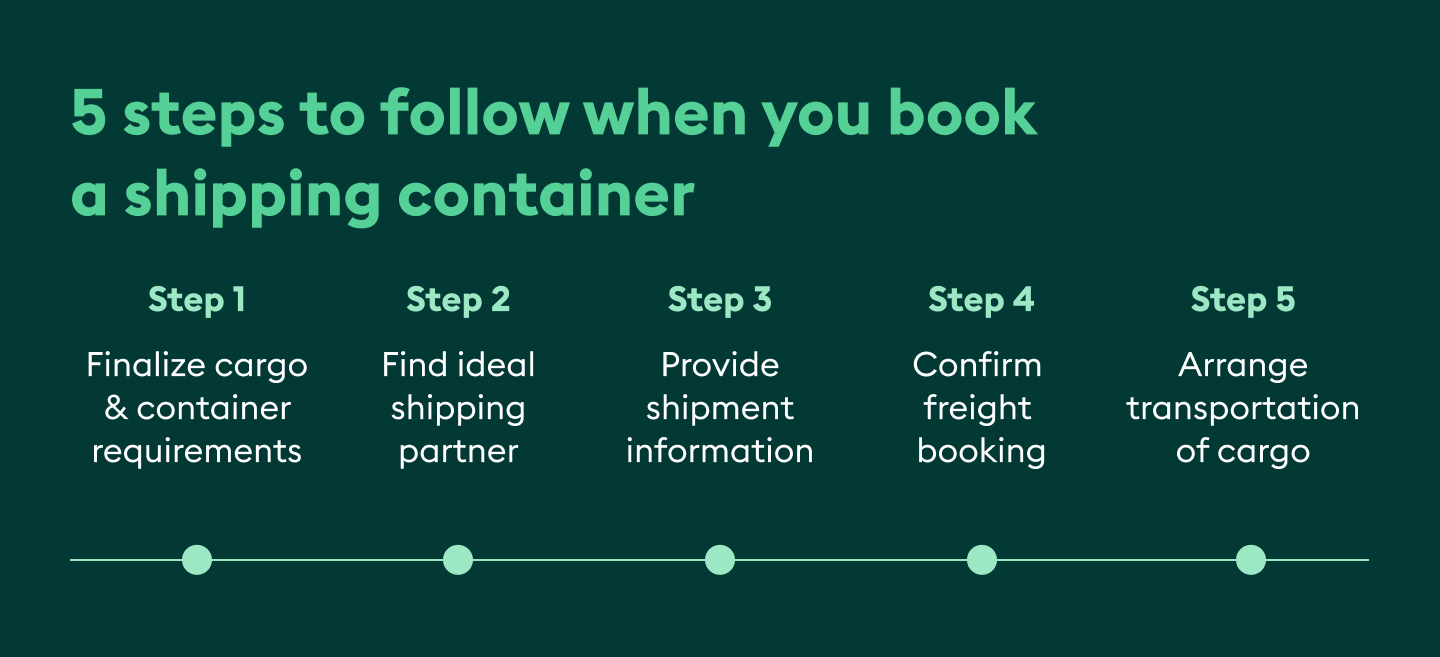
Step 1: Finalize cargo and container requirements
When you start looking for containers, the first thing you need to consider is your cargo requirements. If you need to ship dry cargo, a standard container is the best solution for you. Here, you can choose between the most common sizes: 20ft and 40ft containers. If you need more space, you can choose high cube containers.
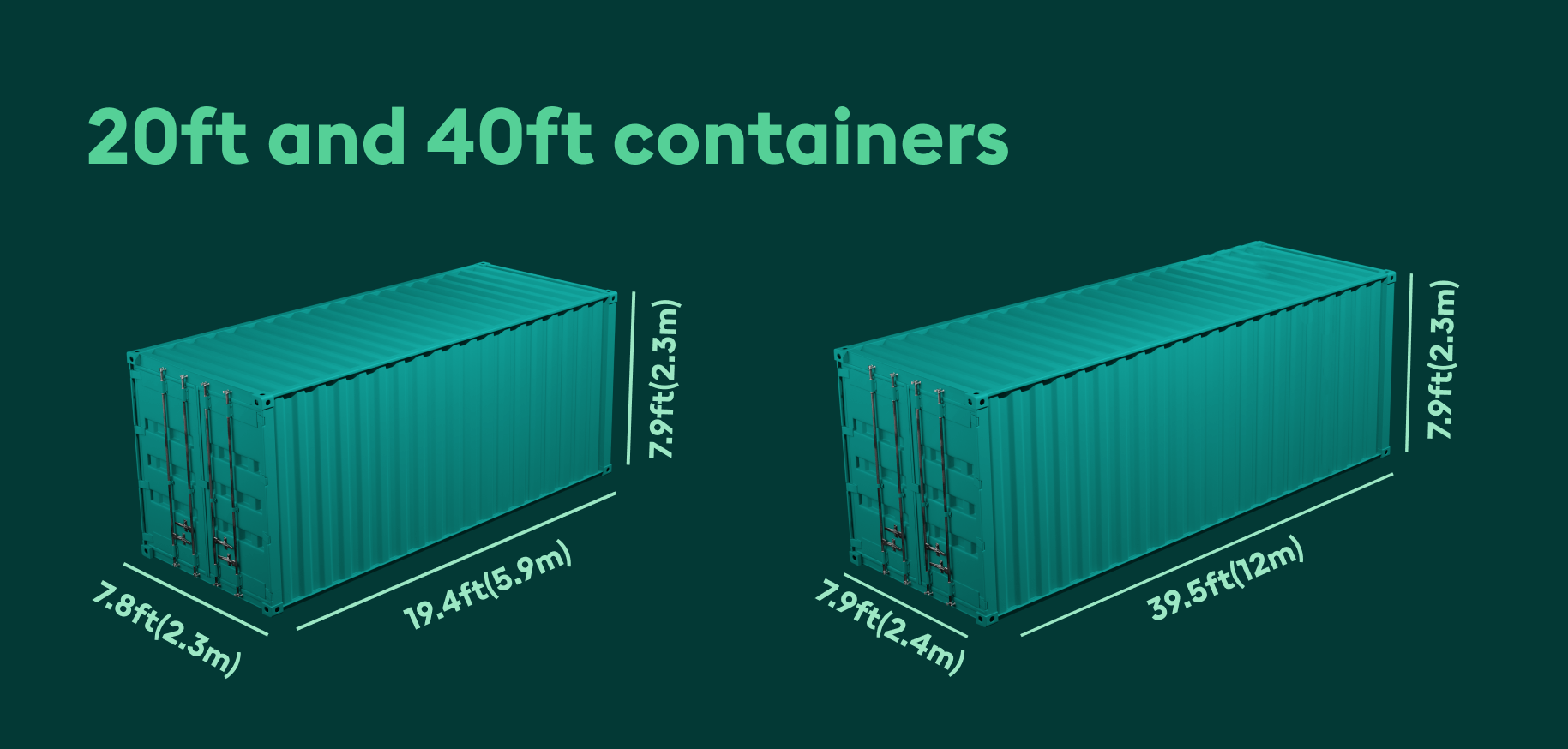
But if your cargo has special requirements, there’s a wide variety of special containers for you to choose from. If you’ll be shipping foods, chemicals, or medicine, you should look into the reefer containers. Reefers help maintain a steady temperature inside the container (perfect for cold chain logistics).
Or, if you are shipping out-of-gauge or project cargo, you’ll need specialized containers such as flat racks, open-tops, hard tops, etc. You can get the full overview and learn more about these container types now.
Get real-time container booking prices
Choosing the right container can help you save money, as it will keep your cargo safe. It’s equally important to make sure that you’re buying or leasing containers at the best rates. However, shipping container prices change constantly and depend on a variety of factors. To make sure you’re getting the best container price, you need to be aware of the current market prices.
And one easy way to do this is through xChange Insights where you can get real-time container prices and leasing terms in up to 180 global locations. Using this information, you can figure out the container rates in your location and routes and plan your budget accordingly.
Then, use the Container xChange platform to buy or lease these containers at the best prices. By using Insights data, you can negotiate for better terms with container suppliers and make sure you’re booking containers at the right prices. Check out container offers from vetted suppliers in your location now and book containers easily!
Step 2: Find the ideal shipping partner and place shipment booking
Once you’ve finalized your container, it’s time to book your shipment. You can either book your container through a shipping line or use freight forwarders to ship your cargo. Many businesses that ship cargo regularly also use online marketplaces to book containers and slot spaces. Read on to see which option is most suitable for your business needs.
Booking containers through a freight forwarder
An efficient freight forwarder will handle everything related to your shipment, so you can spend your resources and time on your business’s core tasks. They will take care of booking the right container, arranging your cargo, and selecting the slots to ship your container.
Freight forwarders, uniquely positioned as middlemen between carriers and shippers, share a good working relationship with both parties. But to streamline shipments in this dynamic industry, they’re always looking to procure containers and slots.
Our platform provides a safe space for such shipping companies to connect to transact containers as well as book slots for these containers on vessels. We also ensure that all payments made through the platform are secure. All companies have a public profile where you can see their ratings and customer reviews so you can choose the right partner for your business.
Browse through vetted container and slot-sourcing companies here and connect with 1,700 vetted companies across the globe.
Booking containers through a shipping line
Shipping lines provide containers to businesses for the shipment of their cargo. These containers are called ‘carrier-owned containers’ (COCs).
COCs are normally used for standard shipments on stretches with a lot of cargo flow. For example, if you’re shipping cargo from China to the US, you can book COC containers with carriers easily. There is little to no incentive for using your own container if the carrier has ample units available and you are paying a fair price for the end-to-end move.
However, you need to return these COCs within a stipulated time called ‘free days’, which are often somewhere between 3-5 days after the container has been discharged from the vessel.
If you fail to return these containers within the free days, the shipping lines will start charging late fees called demurrage and detention. These charges are usually calculated on a per-day basis and can add up! Moreover, many shipping lines are now opting for blank sailings in an attempt to increase freight rates. This can hamper your shipping schedule.
To avoid this, you can book shipper-owned containers (SOCs) instead. Read on to learn how you can do that easily on Container xChange.
How to book a shipping container through an online marketplace
Online container and slot booking marketplaces allow you to organize your container and slot bookings in one place. This way, you can manage your shipment without having to contact multiple parties.
On the Container xChange platform, you can lease SOC containers in 2,500+ locations globally. These containers give you more control over shipping your goods as cost-effectively and efficiently as possible.
To lease SOC containers, all you have to do is go to our leasing platform. Here, you can select the container type you want along with the route. You’ll then get multiple offers to choose from. Compare the rates, check the reviews of suppliers and find the best offers on SOC containers easily.
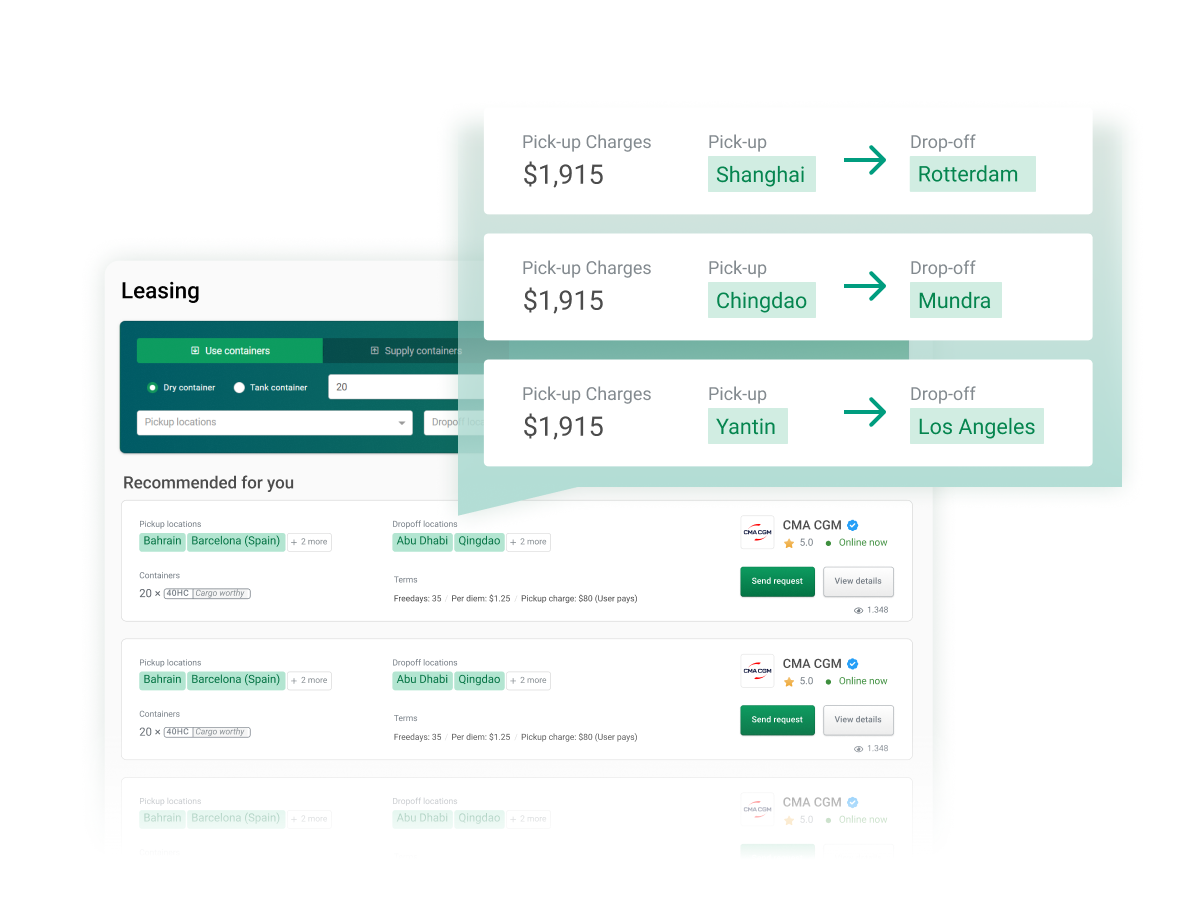
Book slots for your containers
Once you’ve booked SOC containers, the next step is to book the slot space for your containers on a vessel. That too can be easily done through our Ocean Freight Marketplace. Here’s how:
- Our platform provides one-click access to up-to-date rates and sailing schedules on intra-Asia routes. All you have to do is choose your desired ports, container type, and estimated time of departureWhat is estimated time of departure? Estimated time of departure, or ETD, is the date/time when the vessel or container is expected to start off from the port of origin. ETD is significant as it giv... More (ETD).
- Once you get multiple slot offers, you can compare and choose the best fit for you in seconds. Plus, use our online chat to contact the suppliers directly and negotiate for better terms.
- Our platform also offers an easy payment infrastructure with credit terms of up to 30 days. You only need to pay the pick up charge instantly; for all the other bookings, you’ll receive a monthly invoice and get up to another 30 days to settle. You can then pay via credit card or bank transfer.
And that’s it! On Container xChange you can handle your shipment on a single platform easily. Want to know more about how our Leasing marketplace and Ocean Freight Marketplace can help your business? Click the banner below to talk to our experts and book shipping containers now!
Step 3: Provide shipment information
After you have selected the right type of container for your cargo and found the ideal shipping partner, you’ll need to provide important shipping information. Without this information, freight forwarders, shipping lines or online marketplaces will not be able to process your booking. This includes:
- ConsigneeWhat is a consignee? When transporting freight (by ocean, air, or land), there are two parties involved — one who is shipping and the other who is receiving the freight. The recipient of the goods b... More details
- Shipper details
- Cargo-ready date
- Pickup details
- Cargo type
- Notify party
- Vessel name
- Number of containers
- Booking Instructions
Depending on your shipping partner, they may require additional shipment information. Ensure that you follow the requirements according to your booking method to make sure your cargo can reach the destination safely.
Step 4: Confirm container booking
Once you have completed the booking process by filling out all of the required information, all you’re left to do is confirm the booking of your shipment. A booking confirmation acts like a receipt and details all of the relevant information. Depending on how you booked your containers, you may be presented with payment options right after this step.
If you use Container xChange as your container shipping partner, you can easily make payments through the xChange wallet. Our platform ensures that your payments are safe. You can also check your credits or charges online instead of approving piles of paper invoices – saving you time and increasing your efficiency.
Step 5: Arrange transportation of cargo
Now that your booking has been confirmed, ensure that your cargo is ready on the pickup day. Depending on your shipping agreement, you’ll either need to transport your cargo to the port or your shipping partner may also arrange for your cargo to be picked up at your location.
Make sure you confirm these details before signing the contract to ensure the smooth transportation of your shipment. Once the containers are picked up, you’ll receive updates from your shipping partner.
On Container xChange, you can also track your shipping containers. This gives you an additional layer of security when you’re shipping your goods. Want to know more about how our platform can help you book containers? Read on to find out more.
How to book a container in shipping at best prices on xChange
If it’s part of your business to book shipping containers regularly, we’ve got an offer you don’t want to miss! By choosing Container xChange, you can book SOC containers for one-way moves and use the Ocean Freight Marketplace to book slots for your containers. Here’s how:
- Use our leasing platform to lease SOC containers from 1,700 vetted suppliers
- Select the container type you want along with the route. You’ll then get multiple offers to choose from. Compare the prices, check the reviews of suppliers, and find the best offer on 100,000 containers easily.
Once you’ve booked your SOC containers at the best prices, you can then use our Ocean Freight Marketplace to book vessel slots for your containers. We offer the first and only marketplace for slot booking in the Middle East, the Indian Subcontinent, and North and South Asia.
By choosing our slot booking platform over traditional methods, you can:
-Get quick access to up-to-date rates and sailing schedules online: Simply choose your desired ports, container type, and estimated time of departureWhat is estimated time of departure? Estimated time of departure, or ETD, is the date/time when the vessel or container is expected to start off from the port of origin. ETD is significant as it giv... More (ETDWhat is estimated time of departure? Estimated time of departure, or ETD, is the date/time when the vessel or container is expected to start off from the port of origin. ETD is significant as it giv... More). You’ll then get up-to-date rates and schedules.
-Direct negotiation: Want to negotiate for better rates? On our marketplace, you can propose your terms to suppliers. Simply use the online chat to contact suppliers directly. This way, you won’t have to wait days to hear back from them!
-Pay online with credit terms up to 30 days: All xChange members receive credits for immediate deal acceptance. The credit value depends on your tenure, financial stability, and payment history on the platform. You just have to pay the pick up charges instantly; the remaining charges are invoiced monthly. If you use credits to pay for pick up charges, you have 30 days for repayment.
Container xChange is an all-in-one online platform for your container booking needs. 1,700 companies globally are already finding value in xChange. Learn how you can use our platform to increase your business’s profits and ship your cargo safely. Simply click the banner below to book a free tour now!
How to book a container in shipping: Common FAQs
What’s the process of booking a container?
To book a shipping container, you should first choose the right type of container for your cargo. You can then look for the ideal shipping partner. This includes freight forwarders, carriers and online marketplaces. Then confirm your booking and sign the shipping contract.
How do I choose a shipping container?
Selecting the right container comes down to the type of cargo you’re shipping and your budget. Standard containers work well for dry cargo. You’ll need special containers if you’re shipping special cargo.
How much does it cost to put a container on a ship?
The cost of shipping a container depends on a variety of factors. Some of them include the container type and the shipping routes. For example, the pick-up charge for a 20ft container from Hamburg to Chennai was US $194.



